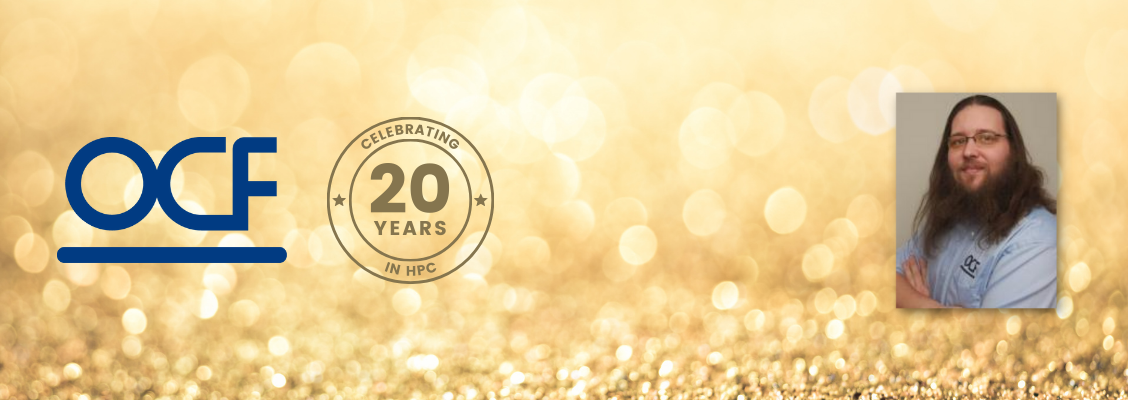Anniversary blog series (6/6)

Q&A with Laurence Horrocks-Barlow, OCF Technical Director
Introduction
In the final Q&A blog of our special 20th anniversary series, Technical Director, Laurence Horrocks-Barlow explores the tech direction of the company and his mission to make this year even more ‘awesomer’.
Q&A
When did you join OCF and what was your role when you first started at the company?
I joined OCF in 2011 as a Linux software support engineer and then went onto become a storage architect. Over my 11 years with the company, I’ve seen OCF grow from a tech team of four into specialist sub teams spanning compute, storage, cloud and AI, further specialising in power, networking and security; to name a few.
What is your role now?
I am the Technical Director at OCF, and my main roles and responsibilities include the technical direction of the OCF roadmap which encompasses the product and partner portfolio and leading our R&D team.
What achievements of OCF are you most proud of?
A few highlights for me include building the storage offering into a standalone division and evolving the R&D team to what it is today. Also, the program management of OCF Steel, our own HPC cluster management software suite developed by the R&D team, is a huge achievement and something I’m extremely proud of.
On a personal level, I love dealing with the research community. I’m heavily involved in the CIUK Cluster Challenge which means working with researchers and students on innovative HPC projects. Motivating and encouraging young people to enter a niche, technical field is a huge passion of mine to develop the talent of tomorrow.
What did the HPC environment look like 20 years ago and how has it progressed over the years?
It’s difficult to summarise as the HPC environment really does look different to 20 years ago. It used to be the case that a customer’s HPC was tucked away in a cupboard, a relatively small resource that a handful of people would use for particular tasks. It was also very manual. The components were not specifically designed for the tasks that datacentres were built for and the idea of GPUs and dedicated silicone just did not exist at the time.
This has transformed incredibly to what it is today. Now we have access to some of the most nascent technologies, being cooled by innovative, direct to silicone water cooling enabling the utilisation of highly dense HPC solutions including GPU’s and dedicated silicone. With these highly efficient designs and the progress of management software these solutions are now used across the entire organisation especially in disciplines that these resources were either not available to, or not known by. It’s now the biggest asset that most research customers possess - a true enterprise offering. It’s been hugely interesting and exciting to watch this develop over the years.
How has the company or customer needs changed in your view over the past 20 years?
I feel today, the core requirements are the same (but evolved) in most industries, in that customers expect more for less, are struggling with skillsets internally and they retain a large expensive resource which holds valuable data that must be protected. However, excitingly there are now requirements from disciplines that have either never utilised HPC, or don’t know the technology as HPC, such as Humanities utilising natural language processing. This is where we can help our customers solve these problems!
What’s in store for this year and any big predictions?
That it’s going to be bigger, better and dare I say more ‘awesomer’. Technology is still developing at a rapid pace, despite even the recent pandemic challenges. We’re going to work on streamlining our processes even further, utilise the public cloud more for extra resource and build more into our stack by trialling new tech.
The most exciting tech will be AI and will undoubtedly be used by most sectors but interestingly I think AI and machine learning will be huge in the life sciences such as neurosciences and bioinformatics. Covid has taught us many things, but one valuable lesson is that if we remove the hoops and let scientists do science with the right tools then the data can be interrogated, predictions can be made, and many questions can be answered to help us solve the world’s biggest conundrums.
